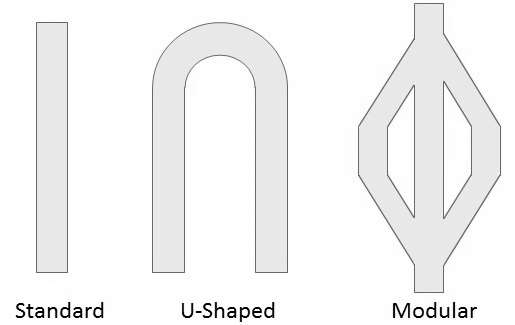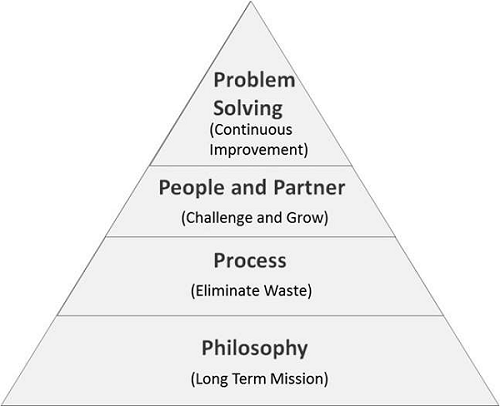We enjoy the process far more than the proceeds.– Warren Buffet
The objective of a process flow management on the shop floor is to support consistent development of procedures while developing a product. The shop floor processes include manufacturing, assembling and processing the products along with controlling the tasks associated with it.
Shop Floor Production Methods
Majorly, there are three types of shop floor production methods −
- Repetitive
- Discrete
- Process
Let us now understand each of them in detail.
Repetitive
This type of production is also called as Mass Production. In this production type, same or similar products are manufactured in large number over a length of time. The product manufacturing has a predefined sequence, which needs to be followed exactly as it is. The routing of repetitive production is also linear and simple. The cost of production is observed as per the time spent on it and production is controlled based on the length of time. For example: Manufacturing of soap bars.
Discrete
In this type of production, specialized products are manufactured on demand. Tailor made articles, custom built machines are manufactured in discrete production. The sequence of operations and workstations is variable. Production is controlled based on the demand. The cost of production is calculated at the time of reception of order; not as per the time spent. The resulting products are individually identifiable and different from the process manufacturing products. For example: Manufacturing of smartphones, computers, etc.
Process
In this production type, the raw material are the products which undergo different phases. For example: Chemical, Pharmaceutical, Food and Beverages, etc. fall under the process type of production method.
There are two types of processes −
- Batch Process − In this process, bulk of the material in batches is processed. One batch of a limited number of items or quantity is processed at a time. Till the current batch of material is finished its processing, the other batches need to wait.
- Continuous Process − It involves continual processing of the material to create a product. It saves waste, energy and costs. It adapts itself to customer needs more effectively and smoothly.
Assembly Types
Here are the most common assembly types −
Assembly Lines
Assembly type can be categorized depending upon the type of assembly line as follows −
- Standard Assembly − It is a semi-automated assembly line. The products-in-manufacturing are placed on the line. The workers and equipment remain stationery on either side of the line to work on the product and the product moves through the line from start to end, often called as a cycle.
- Modular Assembly − It involves advanced assembly lines working in parallel and meeting at the final assembly line. These assembly lines achieve parallelism in manufacturing to some extent. They are expensive, but save a lot of time.

- U-Shaped Assembly − This is a line with a curve along which the workers stand and machines work on the product-in-manufacturing. It provides better communication among the workers. They can also see what is coming to them at what speed. This assembly line enables to produce products with variable designs simultaneously.
Assembly Joints
The following type of joints decide the type of assembly.
- Hardware Assembly − It uses hardware or fasteners such as screws, nuts, and bolts to join various parts together. It allows flexibility to remove the parts or change them. For example, motor chassis assembly.
- Welding Assembly − Multiple metal parts are joined together, which appears as one part after welding. It is a permanent assembly. For example, wrought iron based furniture assembly.
- Soldering Assembly − It uses a filling metal, which is melted to a certain temperature by heating. This metal is used to bind two components together. For example, soldering of electronic parts and jewelry.
4P Management Model for Shop Floor
As per Jeffrey Liker, the author of “The Toyota Way”, the 4P process model of shop floor can be viewed as shown below.

The lowest level Philosophy pertains to the long term thinking such as a mission to contribute to the growth of employees, organization and to the economy.
The second level Process is concerned to improved processes by reducing machine downtime, removing waste and increasing the overall productivity at the shop floor through efficient processing practices.
The third level People and Partner mainly investing resources in people who work for the business such as employees, suppliers and partners for the growth of the business.
Since shop floor management concerns with finding a solution to the real-time problems and incidences, problem solving is located at the highest level. Problem solving is a continual part of shop floor management to ensure that there are no breaks in production.
What Happens on the Shop Floor?
Apart from the actual handling of equipment and tools, working on machines and doing mechanical jobs, here is what happens on the shop floor on daily basis −
- Depending on the volume of production a business handles, a single work order or batches of work orders are created.
- The work orders are then released to the floor.
- The material is issued as per the requirement.
- Purchase requisitions are generated for out of stock material.
- Purchase order receipts are recorded.
- Labor working hours are recorded.
- Subcontracted services are received.
- Leave applications are treated.
- Soft or hard copies of reports are generated for management review.
- Completed jobs are closed.
In the next chapter, we will understand in detail regarding Shop Floor Management Setup.

Comments
Post a Comment